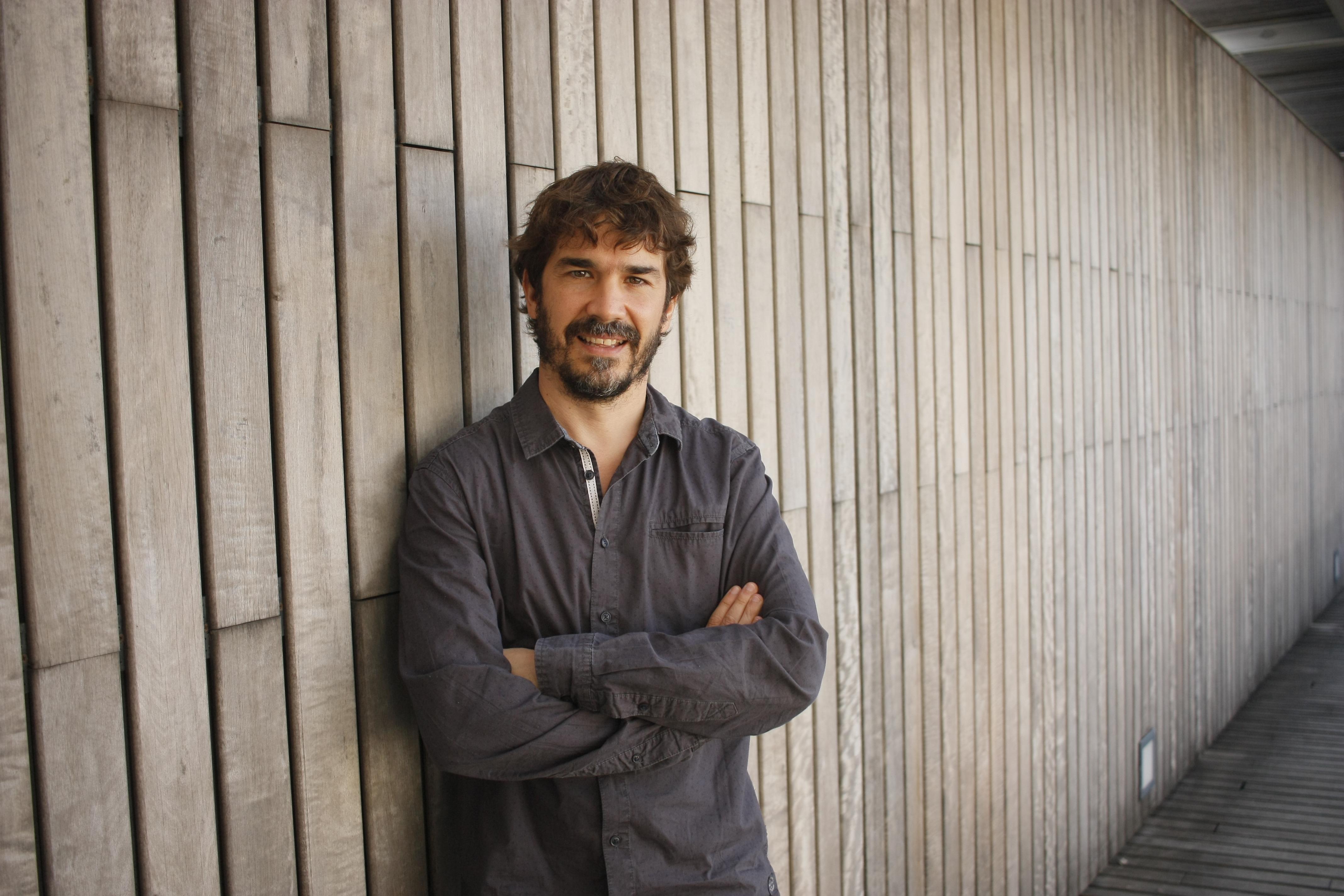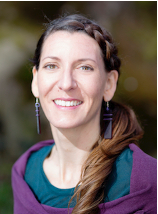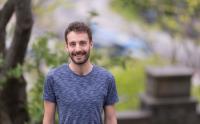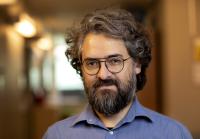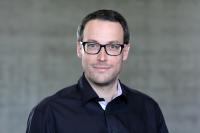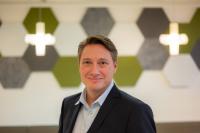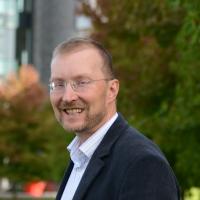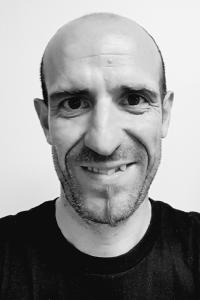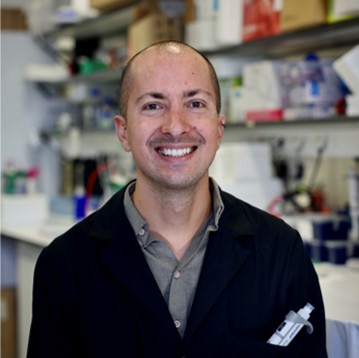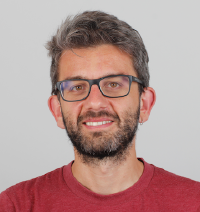You are here :
- EUTOPIA website
- Home
- STUDENTS
- Connected Communities
- ICC
Bioimage Analysis
Connected Community Activities
- Upcoming Activities
- Coming soon
- Past Activities
-
Methods for Learning with Few Data by Marcus Liwicki
Machine Learning with neural networks by Prof. Bernhard Mehlig
Python for Bioimage Analysis Course at UPF | March 31 - April 2 2025
This 3-day course starts with an introduction to Python language and uses image data to familiarise participants with core programming concepts in a research-relevant manner. Participants will learn to use popular python libraries such as scikit-image, matplotlib and pandas to visualise, interact with and extract quantitative data from digital images. The course then delves into basic image processing operations and how they can be combined into practical bioimage analysis workflows, with a special focus on identifying biological objects and extracting their relevant properties (e.g. count, intensity statistics, morphology) by classical bioimage analysis and machine learning techniques. The course also covers the use, programmatic scripting and user interface customization of Napari, a powerful multidimensional image viewer with a very active community.
More information
AnDi+: AI for Bioimaging Beyond Trajectory Analysis Coference at GU | 2 - 5 June 2025
The ANDI+ workshop is an event to present the results of the 2nd AnDi Challenge, but it extends further to discuss data-driven approaches for all aspects of bioimage analysis.
The workshop is organized in collaboration with the CHAIR theme AI for Scientific Data Analysis and is part of the activities of the EUTOPIA Connected Community Bioimage Analysis.
Location: Gothenburg, Sweden
Dates: June 2nd – June 5th, 2025
More information
How to get involved?
Contact
CC lead: Oriol Gallego (UPF). Email: oriol.gallego@upf.edu
Local Facilitator: Laia Cotet (laia.cotet@upf.edu)
Connected Community Members
- Lead: Oriol Gallego (UPF). Email: oriol.gallego@upf.edu
-
Photo
Dr Oriol Gallego is a tenure-track group leader at the MELIS department of UPF, leading the Live-cell structural biology Group in the interface between cell and structural biology. His research focuses on the development of new imaging and image analysis approaches that allow a quantitative understanding of the spatial and temporal organization of the protein machinery that controls cell growth. Oriol did a postdoc at the European Molecular Biology Laboratory (EMBL) in Heidelberg, Germany, under the supervision of Anne-Claude Gavin and Marko Kaksonen. In his postdoc Oriol established a lipid-binding assay for high-throughput screening of protein-lipid interactions and a light microscopy technique to investigate the structure of protein complexes directly in living cells. Already as a Ramón y Cajal researcher at the Institute for Research in Biomedicine at Barcelona (IRB), Spain, he solved the architecture of the exocyst complex bound to a secretory vesicle in yeast, a work that provided unprecedented understanding of the mechanism that controls vesicle tethering in exocytosis. Currently the group of Oriol Gallego has a particular interest for the molecular mechanisms that control exocytosis as a paradigm of a complex and dynamic cellular process that controls the growth of eukaryotic cells. His group combines advanced microscopy (SMLM, particle tracking, PICT and cryo-ET), biochemistry, proteomics and integrative modelling to generate quantitative models of the molecular mechanism that regulates exocytosis. The implementation of unconventional model organisms allowed them to embark on the field of evolutionary cell biology with the aim of understanding the molecular principles that underlie eukaryotes adaptation to different ecological niches - Partner: Caroline Adiels (GU). Email: caroline.adiels@physics.gu.se
-
Originally trained as a biologist, I am now an associate professor in the Department of Physics at the University of Gothenburg, specializing in optics, microfluidics, and active (biological) matter. My research focuses on single-cell analysis and communication, which expands into the development and use of organ-on-a-chip technology. I incorporate image analysis with AI-based software customized for life science research, fostering an interdisciplinary research portfolio bridging physics and biology. - Partner: Daniel Midtvedt (GU). Email: daniel.midvedt@physics.gu.se
-
I am an assistant professor at the department of physics at University of Gothenburg. My research focuses on studying biological systems using quantitative microscopy enhanced with deep learning. Of particular interest is understanding how weak intermolecular interactions govern intracellular organization. - Partner: Giovanni Volpe (GU). Email: giovanni.volpe@physics.gu.se
-
Giovanni Volpe is Full Professor at the Physics Department of the University of Gothenburg University, where he leads the Soft Matter Lab (http://softmatterlab.org). His research interests include soft matter, optical trapping and manipulation, statistical mechanics, brain connectivity, and machine learning. He has authored more than 100 articles and reviews on soft matter, statistical physics, optics, physics of complex systems, brain network analysis, and machine learning. He co-authored the books "Optical Tweezers: Principles and Applications" (Cambridge University Press, 2015) and “Simulation of Complex Systems” (IOP Press, 2021). He has developed several software packages for optical tweezers (OTS — Optical Tweezers Software), brain connectivity (BRAPH—Brain Analysis Using Graph Theory), and microscopy enhanced by deep learning (DeepTrack). He's also co-author of the upcoming book "Deep Learning Crash Course" (No Starch Press, 2024) and co-founder of the stat-ups Lucero Bio AB, IFLAI AB, and Identinano AB. - Partner: Ivo Sbalzarini (GU). Email: ivos@mpi-cbg.de
-
Ivo F. Sbalzarini is a Professor in the Institute of Artificial Intelligence on the Faculty of Computer Science of TU Dresden, and he is a director of the Center for Systems Biology Dresden (CSBD). Since 2021, Ivo is the Dean of the Faculty of Computer Science at TU Dresden. He also is a tenured Senior Research Group Leader with the Max Planck Institute of Molecular Cell Biology and Genetics (MPI-CBG) in Dresden, Germany. He serves as Area Lead for Biomedical Data Science and AI in the Federal Center for Scalable Data Analytics and Artificial Intelligence (ScaDS.AI) and a Research Avenue Leader for Scientific Computing and Smart Microscopy in the DFG Cluster of Excellence "Physics of Life". Ivo's research focuses on computer algorithms for machine learning, data-driven modeling, and high-performance computing in image-based computational biology - Partner: Mattias Goksör (GU). Email: mattias.goksor@physics.gu.se
-
Mattias Goksör is a Professor in Physics and interested in Complex Systems, especially experimental single cell analysis using optical imaging, optical manipulation, microfluidics, and AI. He also has a master’s degree in economics and business administration and is cofounder and CEO of the spinoff company IFLAI (Innovation for Life Sciences through Artificial Intelligence. Mattias Goksör was Vice President of the University of Gothenburg (2017-2021) and Head of Department of Physics (2012-2017). - Partner: Till Bretschneider (UoW). Email: till.bretschneider@warwick.ac.uk
-
Till Bretschneider is a Professor for Systems Biology who employs machine learning and image-based modelling to investigate actin-based cellular dynamics. He obtained his PhD on computational models for morphogenesis from Ludwig-Maximilians-University, Munich (1998). He joined Warwick University in 2007, after spending time as postdoc in Applied Mathematics at Bonn University (1998-2001) and being a fellow and researcher at the Max-Planck-Institute of Biochemistry in Martinsried (2001-2007). - Partner: Javier Sanjuan (UPF). Email: xavier.sanjuan@upf.edu
-
I got a Biology degree in 1998 at University of Barcelona. Later I got a master's degree in Cell Biology in 2001 also at the same site, during which I discovered, became an extensive user and got in love with confocal microscopy. Since 2004 I work as a microscopy technician at Universitat Pompeu Fabra (UPF), where I have gotten expertise in a variety of optical microscopy methods ranging from confocal microscopy, multiphoton microscopy, in vivo epifluoescence and super-resolution microscopy. Since 2005 I have been teaching optical microscopy at UPF both in the Human Biology degree and in PhD courses. - Partner: André Marqués (NOVA). Email: andre.marques@nms.unl.pt
-
André Marqués
André R.A. Marques graduated in Biochemistry (BSc, University of Lisbon; MSc, University of Amsterdam) and currently works at the NOVA Medical School (NMS, Portugal). He obtained his Ph.D. in Medical Biochemistry at the University of Amsterdam, The Netherlands. During his Ph.D. studies he investigated the role of lysosomal homeostasis in neurodegeneration. Afterwards, André developed a 3-year PostDoctoral Project at the University of Kiel (Germany), centred on Batten disease (NCL2TREAT Consortium), the most common inherited neurodegenerative disease in children. This project resulted in the registration of an international patent for the treatment of Batten disease, of which he is co-inventor. Since 2019, A. Marques has been developing a project investigating the role of lysosomal dysfunction in atherosclerosis at the NMS. Last year, he was awarded a position as Assistant Researcher by the Portuguese Foundation for Science and Technology (FCT), to develop a 6-year project focused on the interplay between lipid metabolism and organelle dysfunction in human disease. - Partner: Sébastien Tosi (UPF). Email: sebastien.tosi@upf.edu
-
Sebastien Tosi
By and large, I collaborate with life scientists to help them optimize their imaging experiments for quantitative analysis and I tailor image analysis software tools to extract relevant information backing their research hypotheses. I have a strong experience dealing with a wide range of optical microscopy datasets, algorithms and software packages commonly used in the field (IRB Barcelona microscopy core facility). As workgroup leader of the Network of European BioImage Analysts (NEUBIAS COST Action), I contributed to shape a new BioImage Analysis teaching curriculum for life scientists, organized and taught numerous international courses, and helped set good practices for the publication and benchmarking of related tools and protocols. More recently, I led a pioneer bioimage analysis open facility (part of Danish Bioimaging Infrastructure), which among other things brought me to the topics of facility management and remotely accessible computing infrastructures. Finally, I have experience building custom microscopes and add-ons enabling advanced experiments. - Partner: Orkun Soyer (UW). Email: o.Soyer@warwick.ac.uk
-
orkun
Orkun Soyer is a professor at the University of Warwick, School of Life Sciences and a Gordon and Betty Moore Investigator. His current research focusses on (1) cellular metabolism and understanding the dynamics of metabolic overflows, and (2) spatial and temporal organisation in microbial communities. His group utilizes both modelling and experiments and comprises students and early career researchers with backgrounds in biology, chemistry, physics, and mathematics. Among other techniques, his group uses different modalities of time-lapse fluorescent microscopy, most recently to follow cellular NADH dynamics and spatial organisation through filamentous cyanobacterial motility.
Orkun holds a Phd in chemistry from the University of Michigan, for his work on protein evolution with Dr. Richard Goldstein. After a postdoctoral research on evolution of structure and dynamics of biochemical, cellular networks with Dr. Sebastien Bonhoeffer, at the ETH, Zurich, Orkun started his own research group at the Microsoft Research Centre for Computational Biology in Trento, Italy. He subsequently held lecturer and senior lecturer positions at the University of Exeter, before joining University of Warwick as a professor in 2013 - Partner: Carlo Manzo (UVic -external partner). Email: carlo.manzo@uvic.cat
-
Carlo Manzo is an Associate Professor at the University of Vic, Spain where he leads the Quantitative Bioimaging lab (https://mon.uvic.cat/qubilab/). His research focuses on the quantitative study of biophysical processes. Combining deep-learning algorithms and single-molecule imaging tools, he explores the spatiotemporal organization and dynamics of cell membrane components in health and disease. After graduating in Physics in 2001 and completing his Ph.D. in 2005 at the University of Naples 'Federico II', he has held postdoctoral roles at the University of Emory in Atlanta, the IBEC in Barcelona, and the ICFO in Barcelona. In 2017, he was awarded the "Ramón y Cajal” Fellowship and earned the “E. Pérez Payá” prize from the Sociedad de Biofisica de España. He leads the organization of the Anomalous Diffusion (AnDi) challenge, a community-driven effort to enhance methods for analyzing single-molecule motion.



